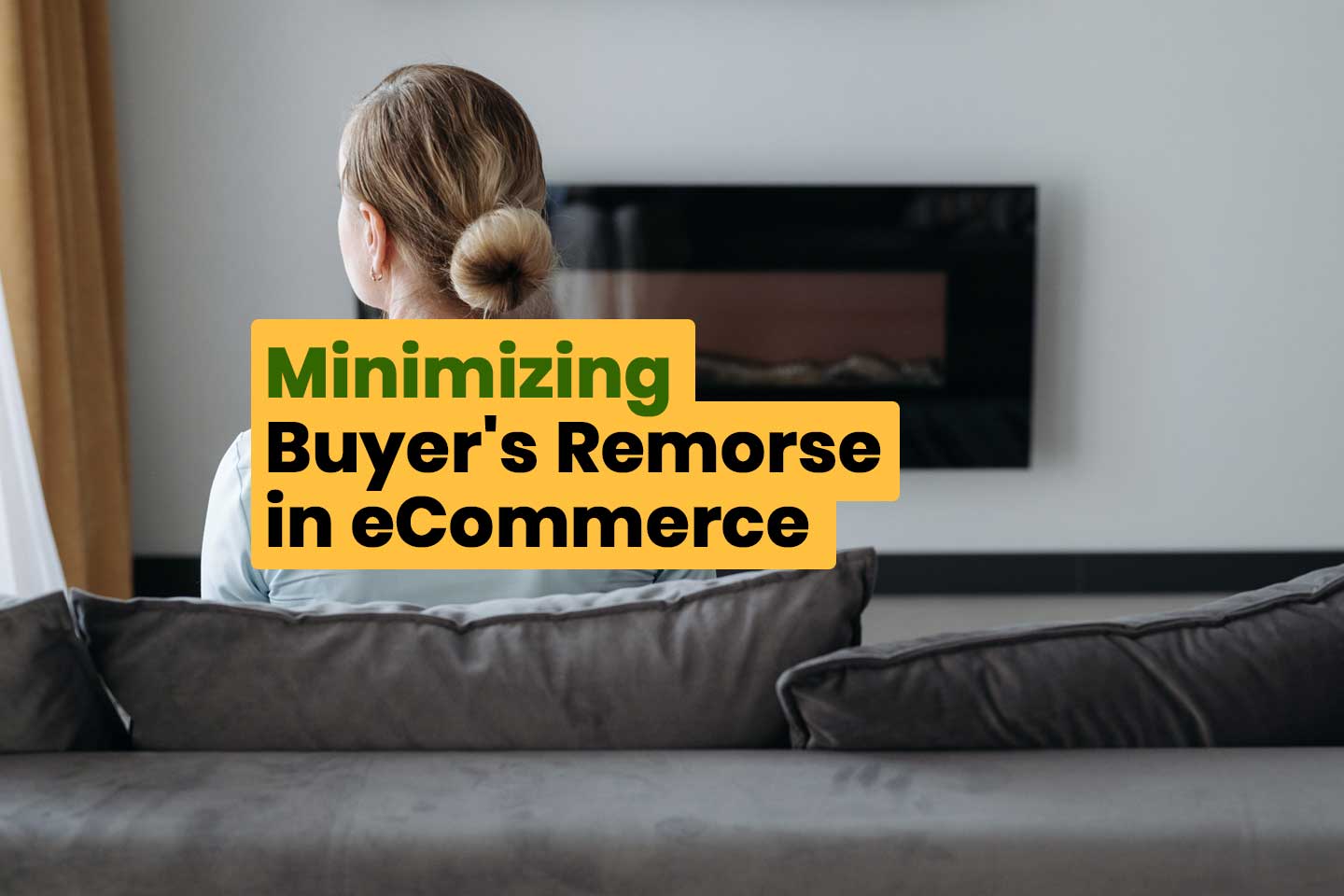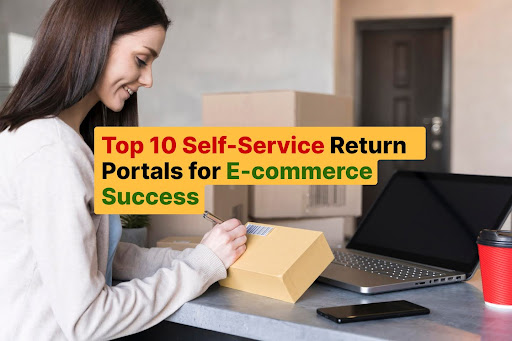Introduction
In an age where digital transactions are rapidly eclipsing brick-and-mortar sales, e-commerce professionals face new challenges and opportunities daily. While a lot of focus is invested in optimizing the pre-purchase journey—from improving website navigation to perfecting marketing emails—an area that’s often overlooked is the post-purchase experience. This oversight can be costly, as it directly impacts something that every retailer dreads: buyer’s remorse.
In this comprehensive guide, we will delve deep into why it’s essential to manage buyer’s remorse and how you can do it effectively to not only retain customers but also to build a sustainable brand in a competitive market.
What is Buyer’s Remorse?
Buyer’s remorse is a term used to describe the regret or dissatisfaction a customer may feel after making a purchase. This phenomenon isn’t restricted to e-commerce, but the anonymity and isolation of online shopping can often amplify these feelings. The psychology behind buyer’s remorse is complex, rooted in cognitive dissonance—the emotional state of holding two contradictory beliefs simultaneously. In the context of a purchase, this could mean balancing the excitement of buying something new against the fear that it might not meet expectations or that it was too expensive.
Psychology of Buyer’s Remorse
Understanding the psychology behind buyer’s remorse is critical for addressing it effectively. Let’s break it down:
- Post-decision Dissonance: This occurs when a customer second-guesses their purchase decision, usually because they start focusing on the downsides of the product or the advantages of the options they didn’t choose.
- Social Proof: E-commerce lacks the ‘social proof’ found in physical stores where seeing other shoppers can validate one’s buying decision.
- Lack of Tangibility: Customers cannot immediately see, touch, or use the product, leading to uncertainty and doubt.
- Financial Concerns: The immediate decrease in one’s bank balance without the gratification of having a new item in hand can cause anxiety.
Understanding these psychological triggers can provide e-commerce professionals with valuable insights into how to counteract buyer’s remorse.
Why Does Buyer’s Remorse Occur in E-commerce?
Delay Between Purchase and Possession
In the realm of e-commerce, the ‘lag time’ between making a purchase and actually receiving the item can often lead to uncertainty and, consequently, buyer’s remorse. Customers do not have the immediate gratification of walking away with a product in their hands. Instead, they have to wait, often anxiously, for it to arrive, and during this waiting period, doubt can set in.
Overchoice or “Choice Overload”
The sheer variety of options available online can also contribute to buyer’s remorse. When consumers are faced with too many choices, they may second-guess their decisions, worrying they may have made the wrong choice.
Fear of Making the Wrong Decision
Without the ability to touch, feel, or try a product before buying, there’s always an element of risk involved in e-commerce shopping. This risk can lead to a fear of making the wrong decision, especially for more significant, costlier purchases.
The Importance of Managing Buyer’s Remorse
Ignoring buyer’s remorse can have detrimental consequences for e-commerce businesses. According to a study by Bain & Company, increasing customer retention rates by just 5% can lead to an increase in profits ranging from 25% to 95%. High numbers like these underscore the fact that keeping existing customers is not just a nice-to-have—it’s essential.
Impact on Customer Retention and CLV
The term Customer Lifetime Value (CLV) is often bandied about in marketing circles, but its importance cannot be overstated. Simply put, CLV is the total revenue a company expects to earn from a customer throughout the entire future relationship with them. Naturally, if a customer experiences buyer’s remorse and chooses not to shop with you again, their CLV drops to zero. However, if managed correctly, buyer’s remorse can be turned around to not just salvage a sale, but also to build long-term brand loyalty, thereby increasing CLV.
Cost of Customer Acquisition Vs. Retention
Acquiring a new customer can cost five times more than retaining an existing one. Moreover, the probability of selling to an existing customer is around 65%, while the likelihood of selling to a new prospect is just 5-15%. These statistics are a wake-up call for e-commerce businesses to start investing in managing post-purchase experiences.
A Multi-Touchpoint Communication Strategy
In today’s e-commerce landscape, simply sending a confirmation email and shipping notice isn’t enough. Customers expect, and indeed appreciate, being informed at multiple points in their buying journey, particularly in the post-purchase phase. This phase offers a perfect opportunity for e-commerce businesses to foster strong relationships with their customers by providing timely and transparent communication.
Crucial Checkpoints
Here are the checkpoints where communication is crucial:
- Order Confirmation: The immediate email that confirms a successful transaction should be seen as the first step in managing potential buyer’s remorse. This email can include a heartfelt thank-you message, summarize the purchase, and offer additional resources like how-to guides or related blog posts.
- Shipment Initiation: Inform the customer as soon as their product has been dispatched. This not only builds anticipation but also serves as reassurance that their purchase is on the way.
- Out for Delivery: This is a crucial point in the customer’s journey where excitement is often at its peak. Informing the customer that their package is out for delivery helps build anticipation and reassures them that the package will arrive soon.
- Variances: If there are any issues, such as a delay in shipment or an out-of-stock situation, proactive communication is key. Transparently explain the situation and how you’re addressing it.
- Delivery Confirmation: Once the product is delivered, sending a notification not only completes the transaction loop but also opens a window for asking for reviews or promoting additional products.
- After-Delivery Follow-Up: This is a critical touchpoint often overlooked. A follow-up email a few days after the product has been delivered can serve multiple purposes. It can be used to ensure the customer is satisfied with their purchase, provide tips on how to make the most of their new item, and even introduce new products or upcoming promotions.
Each of these touchpoints provides an opportunity for personalized, branded communication that not only keeps the customer informed but also engaged with your brand. They serve as additional opportunities to mitigate buyer’s remorse by reaffirming the customer’s decision to purchase, keeping them excited about their order, and letting them know that you’re there to support them before, during, and after the transaction.
The Power of Branded Communication
Generic courier-generated emails fail to extend the shopping experience past the buy button, effectively ending the customer’s interaction with your brand. According to data from Mailchimp, transactional emails have an average open rate of approximately around 70%, compared to below 20% for bulk newsletters. Considering this, it’s essential to customize these high-engagement emails to reflect your brand’s voice and ethos.
Statistics on Open Rates
Open rates serve as a robust measure of how effective your email communication is. For example, according to Mailgun, package-tracking emails alone have an open rate of 80-85% because users often open the email multiple times to check the status of their package. When such high engagement rates are at play, missing out on branding these touchpoints can be considered a lost opportunity.
Multi-Channel Communication: Meet Your Customers Where They Are
In today’s digital world, customers have numerous touchpoints with brands—email, SMS, social media, messaging apps, and more. The more platforms you’re able to effectively engage your customers on, the better you can manage their post-purchase experience. Here’s why embracing a multi-channel approach is crucial:
Reaching a Wider Audience
Not all customers prefer the same communication channels. Some might frequently check their email, while others may be more responsive to SMS or push notifications from an app. By diversifying your communication platforms, you ensure that your message reaches the widest possible audience.
Enhancing Customer Convenience
Meeting customers where they already are enhances their convenience and improves their overall experience. If they are active on a messaging app, receiving an update there removes the need for them to switch between different platforms to get the information they need.
Creating a Seamless Experience
Multi-channel communication also allows for a seamless customer experience. By offering consistent messaging and branding across various platforms, you reinforce your brand’s image and message. This not only adds to the customer’s convenience but also builds trust.
Real-Time Updates and Engagement
Some channels, like SMS and messaging apps, allow for real-time communication. This can be particularly useful for time-sensitive updates, such as ‘out for delivery’ notifications or instant customer support.
Examples and Statistics
According to our study, SMS open rates are as high as 98%, and most messages are read within just 5 seconds.
By using various channels for post-purchase communication, you can capitalize on the strengths of each medium. For example, emails are excellent for detailed explanations and attachments, while SMS and messaging apps are better suited for quick, time-sensitive updates.
The Returns Process and Buyer’s Remorse
One of the most challenging aspects of managing buyer’s remorse is dealing with product returns. Shoppers are less likely to shop from a retailer again if their return experience is poor. Here, too, proactive and branded communication can work wonders.
Importance of a Smooth Returns Process
Having a straightforward, hassle-free returns process is not merely a value addition; it’s a necessity. Offering options like free returns can not only enhance customer satisfaction but also dramatically decrease the chances of future buyer’s remorse. Why? Because the consumer knows that if the product isn’t right, returning it won’t be a problem.
Digital Returns and Exchanges
A well-designed, branded returns portal can further streamline the process. When returns are submitted online, it’s easier to compel customers to opt for store credit or an exchange over a cash refund, thereby reducing the financial impact of the return on your business.
Leveraging Technology to Combat Buyer’s Remorse
In the digital age, leveraging technology is not just an option; it’s a necessity for any e-commerce platform looking to optimize their post-purchase experience and minimize buyer’s remorse. Here are some tech-driven approaches that can make a difference:
AI-Powered Chatbots for Immediate Customer Service
Customers don’t like to wait. AI-powered chatbots can offer immediate responses to common queries, providing a sense of immediacy that’s often missing in the e-commerce landscape. For example, if a customer starts to question their purchase, a well-timed message from a chatbot can provide reassurance and even offer add-ons or upgrades that enhance their original purchase, thus offsetting potential remorse.
Automated Follow-Up Systems
Automated systems can send follow-up emails at different stages of the product lifecycle—such as a week after delivery asking for a review or suggesting complementary products. These touchpoints keep the customer engaged and may deter them from regretting their original purchase.
Predictive Analytics for Personalization
Using predictive analytics, e-commerce businesses can anticipate the kind of products a customer is more likely to purchase or regret. This data can be used to personalize every stage of the customer journey, including post-purchase communication, making the customer feel truly understood and valued.
Transforming Negative Experiences into Opportunities
No matter how optimized your processes are, there will always be instances where things don’t go as planned. Packages get lost, items get damaged, and sometimes the product just isn’t what the customer expected. These are not necessarily lost causes but rather opportunities to turn a negative experience into a positive one.
Case Study: Zappos
Take the case of Zappos, an online retailer that has set the standard for customer service. Zappos offers a 365-day return policy and provides free return shipping. A study found that 75% of Zappos’ customers return to make another purchase. Why? Because they’ve transformed the potentially negative experience of a return into an opportunity to build trust and loyalty.
Practical Steps to Overcome Buyer’s Remorse
1. Provide Detailed Product Information
Clear, comprehensive product descriptions and images can preempt buyer’s remorse by helping the customer to feel more confident in their purchase decision.
2. Offer Immediate Order Confirmation
As soon as a customer makes a purchase, send them an immediate order confirmation. This reassures the customer that their transaction was successful and sets the stage for a transparent communication process.
3. Keep Customers in the Loop: Crucial Checkpoints
One of the most effective ways to alleviate buyer’s remorse is to keep customers informed at every stage of the order fulfillment process. Use a multi-channel approach—email, SMS, messenger services, and in-app notifications—to update them at the following checkpoints:
- Order Confirmation: Acknowledge the receipt of the order.
- Shipment Initiation: Notify when the product is out for shipment.
- Out for Delivery: Alert them when the product is out for delivery, offering a real-time tracking option if possible.
- After-Delivery Follow-Up: Once the product is delivered, a courtesy message asking about the product condition or offering additional support can go a long way in building trust and reducing remorse.
4. Educate Your Customers: Use the post-purchase period to educate your customers about the product they’ve bought. Offer guides, video tutorials, and user tips to help them get the most out of their purchase.
5. Hassle-free Returns and Exchanges
Offer an easy, straightforward returns process. Make it easy for customers to choose store credit or exchanges over refunds to increase retention.
6. Post-Purchase Support
Provide customer service that doesn’t end at the point of sale. Offer how-to guides, video tutorials, or dedicated customer support to assist with any post-purchase issues.
Conclusion
Buyer’s remorse is a phenomenon that every retailer, online or otherwise, has to contend with. The way to minimize its impact lies in creating a seamless and engaging post-purchase experience. From the initial confirmation email to the delivery of the product and beyond, each touchpoint is an opportunity to reinforce your brand’s value and commitment to customer satisfaction.
By employing a mix of technology, personalized communication, and customer-focused policies, e-commerce professionals can not only reduce the incidence of buyer’s remorse but also transform potentially negative experiences into opportunities for long-term customer engagement and loyalty.
As e-commerce continues to evolve, those who invest in optimizing their post-purchase processes will not only mitigate buyer’s remorse but also enhance customer loyalty, thereby sustaining and growing their businesses in an increasingly competitive market.


